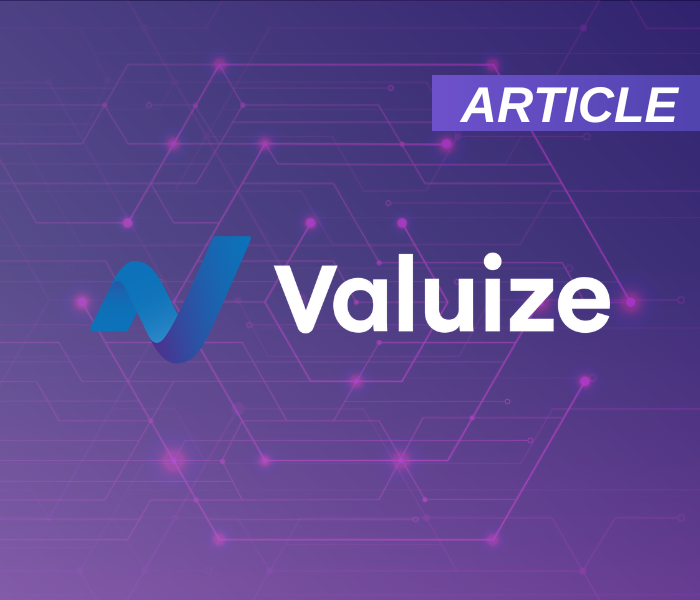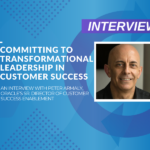Investing in customer success technology, like a Customer Success Platform (CSP), has the power to transform how your business retains customers, boosts engagement, and maximizes overall value. However, without the right strategy and execution, these investments can fall short—leaving you with underutilized tools, wasted resources, and frustrated teams. To avoid these common pitfalls, Valuize recommends nine steps to ensure your customer success tech investment delivers meaningful results.
1. Build a Clear Customer Success Strategy First
A common mistake for businesses is thinking that simply purchasing a customer success platform will magically create a customer success strategy that works. It’s like buying a CRM and expecting it to instantly improve sales. Technology alone doesn’t fix problems—you need a clear plan and a comprehensive strategy to guide your implementation, adoption and Return-on-Investment (ROI)n.
Before you even start evaluating platforms, make sure your organization has, at least, a detailed roadmap for your customer success strategy against which the platform investment can be aligned. If you already have customer success activities, processes, roles and insights designed, all the better. Ask yourself: What specific strategic outcomes are we aiming for? Whether it’s improving Net Revenue Retention (NDR), increasing customer coverage or optimizing efficiency across the customer lifecycle, your customer success strategy should already be defined for how you’ll achieve these goals. A customer success platform will help operationalize your strategy design. It will not give you the strategy. While it doesn’t have to be perfect right away, having at least a rough “version 1.0” strategy means you’ll be able to configure the platform to meet your needs from the start.
Your customer success strategy should reflect the unique aspects of your business, from product architecture and pricing models to target markets. Customization to your company is key here—don’t just copy-paste someone else’s strategy or generic best-practices.
2. Get Your Data Ready
Your customer success platform is only as good as the customer data feeding into it. If your data is messy—disorganized, inaccurate, or incomplete—your team won’t get the customer insights they need, and actions will be off-target.
Before rolling out a CSP, take a hard look at the quality of your customer data. Focus on cleaning up the data points that matter most for the goals of your customer success strategys. Even though no data is ever 100% perfect, making sure the core information about your customers is actionable will lead to more meaningful insights and effective action. Ask yourself: Is this data something we can act on? Does it reflect a metric our team can influence? Without solid data, even the most advanced customer success platform won’t succeed in your organization.
3. Secure Executive Buy-In
Don’t just get your frontline customer success teams and leadership on board—executives from across the teams that drive your customer lifecycle need to be just as invested in this technology’s success. Whether it’s your CMO, CPO, CRO and, of course, CCO, they’ll want to see how the CSP will support the strategic objectives they are invested in achieving. Ideally, there will be a set of goals and metrics that serve as a north star uniting the C-Suite to which you can tie the CSP investment. This might include Net Revenue Retention, Gross Margin or EBITDA – all of which impact company valuation and therefore executive bank balances. .
Also consider the goals and metrics owned by each executive individually. A great example is the potential stake your Chief Marketing Officer has in digitally engaging existing customers to drive expansion leads. Proactively tackle the question of how will the customer success platform compliment this goal versus conflict with it by creating a siloed digital customer engagement strategy that sits in the customer success function.
When presenting the case to your executive team, connect the dots between the technology and business outcomes. Use hard data to show how it will improve Gross or Net Dollar Retention, reduce churn, or optimize team performance. The stronger your business case, the more likely you are to get full leadership support, which is crucial for a successful long-term rollout.
4. Don’t Over-Automate Right Away
Automation is one of the big selling points of a CSP, but it’s easy to get carried away too soon. In the early days of implementation, keep things simple.
Start by building a strong foundation with core processes – like automating an existing, but manual renewal or escalation process that has already been adopted by your team . Over-automating from the get-go can cause automation fatigue – confusing or overwhelming your team – and they might start bypassing important features out of frustration. Instead, focus on automating high-impact, repetitive tasks that provide quick wins, then scale up as your team becomes more comfortable with the system.
5. Invest in the Right Team
It’s not just about buying software—it’s about having the right people in place to manage it. Many companies underestimate how much ongoing attention and expertise these platforms require.
You’ll need skilled administrators and architects who can maintain the platform, handle integrations with systems like your CRM or support software, and customize it to fit your evolving needs. Depending on your CSP’s complexity, you may need a dedicated admin team. This investment in building the right team to succeed is just as critical as the technology itself.
6. Focus on Change Management
No matter how great your new platform is, it’ll only succeed if your team embraces it. You can’t just drop new technology into the mix and expect everyone to adapt. Change management is essential.
Start by clearly explaining why you’ve invested in the CSP and how it will benefit both the business and the individual users, which can include access to data and 360 degree view of the customer, task tracking, a centralized record account activities, or and notifications for risks and lifecycle events. Often, these can map to pain points that a user would have experienced in their role without the benefits of a CSP. Be sure to answer the all-important question: What’s in it for me? Involving your frontline teams in the design and rollout process can go a long way in securing their buy-in from the start.
Training is also critical—provide hands-on resources like workshops, office hours, or internal champions to help ease the transition. And remember, change management doesn’t end at launch. Ongoing support and feedback loops are crucial for long-term success.
7. Start Small and Measure Early Wins
When you roll out a new platform, it can be tempting to try and do everything at once. Don’t. Trying to launch every feature simultaneously will spread your resources too thin and set you up for failure.
Instead, focus on a few high-priority initiatives that align with your biggest business goals. Break them down into manageable pieces, deliver quick wins – like collaboration on accounts, increases in scalability, improved visibility on risk – and celebrate early successes. These quick wins will help build momentum and reinforce the value of the platform to your team and execs alike.
8. Commit to Continuous Improvement
Implementing your customer success platform isn’t a one-time event—it’s an ongoing process. Customer needs will evolve, your business goals will shift, and your CSP needs to keep up.
Set up regular feedback channels to gather input from users and stakeholders, and make sure you have a plan in place for continuous iteration and improvement. As your team gets more comfortable with the platform, you can look for opportunities to extend its use into other departments—like sales or services—to create a more holistic approach to customer lifecycle management.
To maximize the value of your CSP, adopting an agile methodology is essential. Agile practices enable your team to quickly respond to changing customer needs, iterate on processes, and deliver continuous improvements. By breaking down large projects into smaller, manageable tasks, you can ensure faster feedback cycles and adapt the platform based on real-time insights. This iterative approach helps you achieve measurable value early in the CSP implementation journey and keeps your organization flexible and responsive.
In Conclusion
To get the most out of your customer success technology investment, it takes more than just buying the right platform. Avoiding a failed customer success technology investment requires careful planning, execution, and continuous improvement. By ensuring that your organization has a well-defined customer success strategy, is data-ready, secures executive buy-in, avoids over-automation, and applies robust change management, you will significantly increase the likelihood of a successful implementation. Investing in the right people and fostering a culture of ongoing improvement will further help you unlock the full potential of your customer success technology, ensuring that your investment delivers measurable business value.






